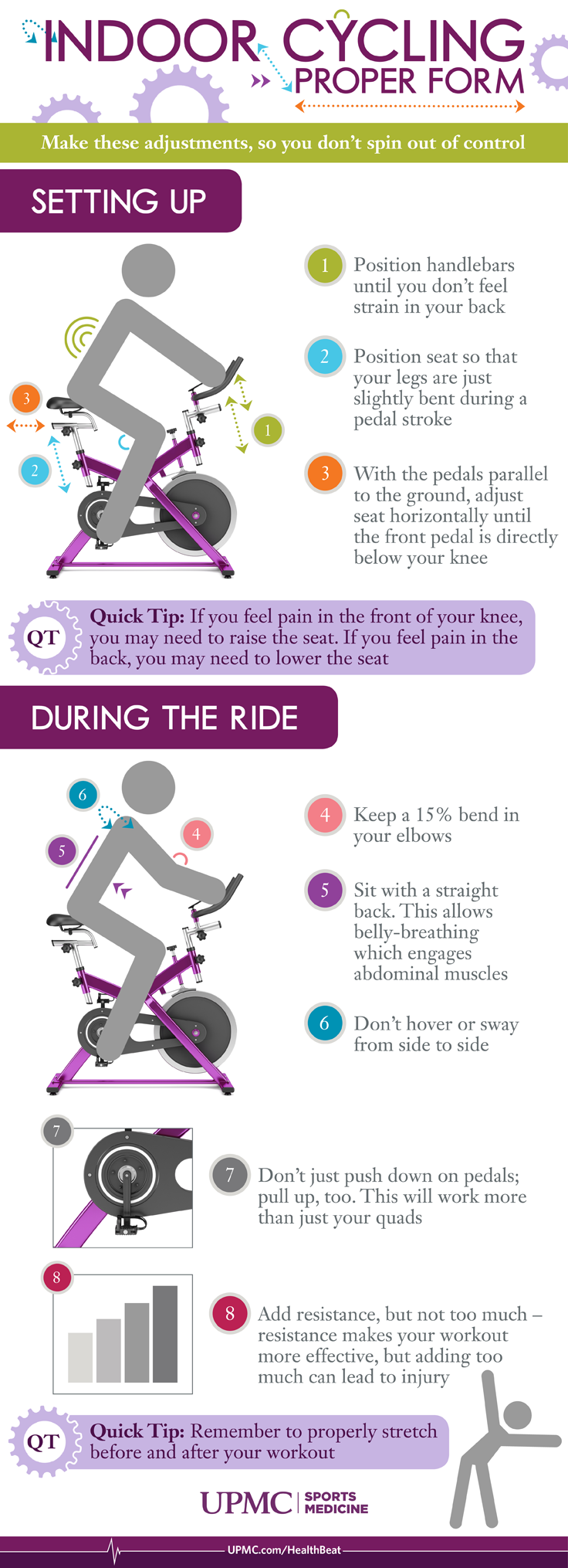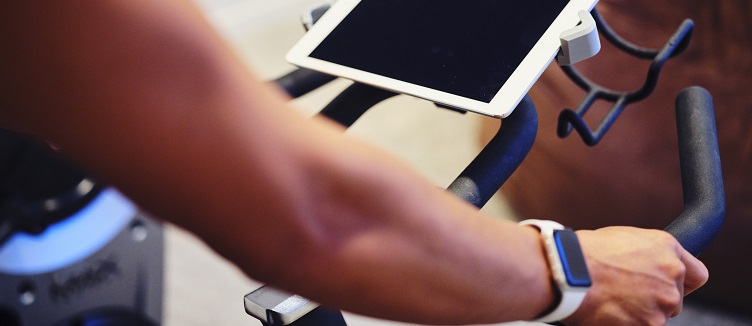Indoor cycling is an excellent form of exercise — it’s challenging, fun, and provides a great workout.
But before you hop on your bike for the first time, it’s important to understand the basics. Matt Tinkey, MS, LAT, ATC, PES, of the UPMC Sports Medicine’s Cycling Performance program shares his advice on what novice indoor cyclists need to know in order to prevent injuries and get the most out of every workout.

Never Miss a Beat!
Subscribe to Our HealthBeat Newsletter!
Thank you for subscribing!
You can now select the specific newsletters you'd like to receive.
You are already subscribed.
Subscribe to more newsletters in our email preference center.
Sorry, an error occurred. Please try again later.
Get Healthy Tips Sent to Your Phone!
Indoor Cycling Setup
The first step in preventing injuries is to make sure your bike is set up properly, allowing you to maintain safe and proper form.
- From a seated position, lean forward and adjust the handlebars so you feel comfortable. Lowering them gives your core and hamstrings more of a workout, but it’s more important to avoid straining your back.
- Adjust the seat so your legs are slightly bent when you pedal. If the front of your knee hurts when you pedal, raise the seat. If you experience pain in the back of the knee, lower it.
- Check the distance of your body from the handlebars. With the cranks parallel to the ground, the pedal should be directly below your knee. In other words, if you drew a line from the middle of your knee, it would run perpendicular to the pedal.
Cycling Form During Class
Once you have your bike set up, you’re ready for class. You’ll want to continue to check your position during your ride to ensure proper form.
- Use your whole hand to loosely grip the handlebars so your elbows are about 15 degrees. Using just your fingertips could cause a strain.
- Breathe from your belly and keep your back straight. This will engage your abdominal muscles.
- Keep your hips over the seat. Swaying from side to side can put unnecessary strain on your body.
- Remember, pedals move both ways. Don’t just push down on them with your feet — make sure you’re pulling up as well, which will work more than just your quads.
- Get the resistance just right. You don’t want to skimp on resistance — doing so makes your workout less effective and increases your chances of injury. At the same time, too much resistance can take the focus away from big muscle groups, raising the odds of hip, knee, and lower back injuries. Form should always trump resistance.
- Keep your abs engaged during the whole workout for a strong core.
After Cycling Class
A safe indoor cycling session continues even after class wraps up.
- If you wear biking shoes, be sure to unclip them while standing, so you don’t put unnecessary pressure on your hips and knees.
- Stretch it out. Give your major muscle groups a good stretch after class.
- Don’t stop here: Ultimately, indoor cycling can serve as great practice for cycling outdoors.
Find out more about getting fit and staying healthy by visiting the UPMC Sports Medicine website.
About Sports Medicine
An athletic lifestyle carries the potential for injury. Whether you’re an elite athlete or a weekend warrior, UPMC Sports Medicine can help. If you are looking to prevent, treat, or rehabilitate a sports injury, our multidisciplinary team of experts can help you get back into the game. If you are seeking to improve your athletic performance, we can work with you to meet your goals. We serve athletes and active people of all ages and experience levels. Our goal is to help you keep doing what you love. Visit our website to find a specialist near you.
